This article was co-authored by Mayami Oyanagi. Mayami Oyanagi is a Physical Therapist and the owner of PT STOP Physical Therapy & Wellness, an individualized physical therapy practice in Los Angeles, California. With over 14 years of experience, Mayami specializes in orthopedic injuries, manual therapy, and sports medicine. She holds an MS in Physical Therapy from the University of Hartford. Mayami is also a board certified Orthopedic Clinical Specialist. She treats the root cause of her client’s problems by utilizing biomechanical assessments.
There are 17 references cited in this article, which can be found at the bottom of the page.
wikiHow marks an article as reader-approved once it receives enough positive feedback. In this case, 100% of readers who voted found the article helpful, earning it our reader-approved status.
This article has been viewed 115,907 times.
Pain in the neck is common and can be triggered by various issues, including muscle strain, ligament sprain, jammed spinal (facet) joints, disc herniations, "pinched" nerves and diseases such as osteoarthritis.[1] The most frequent root cause of neck pain is poor posture or positioning, whether it be at your work desk, driving your car, working out at the gym or sleeping in your bed at night. Poor posture combined with stress (which causes tight muscles) is a recipe for chronic neck pain. However, most instances of neck pain can be handled at home with the right information and only the more stubborn (or serious) cases require some form of professional treatment.
Steps
Relieving Neck Pain at Home
-
1Be patient and rest. Your cervical spine (neck) is a complex collection of bones, joints, ligaments, nerves, muscles and blood vessels.[2] As such, there are many structures that can generate pain if you move your neck the wrong way or experience some trauma, such as whiplash. Significant neck pain can come on quickly but it can sometimes go away just as quickly (without any treatment) because the body has a fantastic ability to sort itself out and heal. Thus, be patient for a few hours if you experience a bout of neck pain, avoid any strenuous or irritating activities and keep a positive attitude.[3]
- Neck injury symptoms that indicate you should immediately seek medical attention include: severe neck pain that gets progressively worse, muscle weakness and/or loss of sensation in your arms, throbbing headache, blurry vision, loss of balance and/or nausea.[4]
- Resting your stiff or painful neck is a good idea, but completely immobilizing it in a neck collar or brace is not recommended for most injuries — it promotes weak muscles and less mobile joints. At least some gentle neck movement is needed to encourage blood flow and stimulate healing.
- If your neck pain is exercise-related, you may be working out too aggressively or with bad form — talk to a personal trainer.
-
2Apply cold therapy for acute pain. The application of cold therapy is an effective treatment for essentially all acute (recent) musculoskeletal injuries, including neck pain.[5] Cold therapy (whether it be ice, a frozen gel pack or a bag of veggies from the freezer) should be applied to the most painful part of your neck in order to reduce inflammation and pain. The cold causes the local blood vessels to constrict, which prevents excessive swelling, and it numbs small nerve fibers. Apply Cold therapy for 15 minutes every hour for the first three to four hours post injury, then reduce the frequency as the pain and swelling subside.
- Compressing the ice (heat aswell)against your neck with a stretchy bandage or elastic wrap will also help combat inflammation, but be careful not to completely cut off circulation.
- Wrap frozen items in a thin towel in order to prevent skin irritation or frostbite on your neck.
- Acute pain typically lasts for less than a few weeks, but can transition into chronic pain if it lingers for a few months or longer.
- Keep in mind that cold therapy may not be appropriate for chronic (long-term) neck pain that doesn't involve much inflammation — applying moist heat may provide more relief.
Advertisement -
3Apply moist heat for chronic pain. If your neck pain has become chronic (lasting for a few months or longer) and feels more stiff and achy instead of inflamed and painful, then avoid cold therapy and apply moist heat.[6] Microwavable herbal bags are tailor made for neck pain and work well for relaxing the tension in muscles and reducing achiness in spinal joints, especially those products that are infused with aromatherapy (such as lavender or rosemary). Unlike an acutely injured neck, chronic neck stiffness benefits from the increased blood flow that heat provides. Apply the herbal bag for about 20 minutes at a time, up to 3x daily.
- As an alternative, soak your chronically sore neck and shoulders in a hot Epsom salt bath for 20 minutes. The hot water improves circulation and the magnesium-rich salt works well to reduce ligament and tendon tension, joint stiffness and pain.[7]
- Applying some form of moist heat to your neck just prior to performing stretches (see below) is a good idea in most instances because it will make the muscles more pliable and less likely to become more strained.
-
4Take pain medication short-term. Consider taking over-the-counter non-steroidal anti-inflammatories (NSAIDs) such as ibuprofen, naproxen or aspirin for acute neck issues, but keep in mind they are best used as short-term solutions to help you deal with inflammation and pain.[8] These drugs can be hard on your stomach and kidneys, so try not to use them for more than 2 weeks at a stretch. Always remember that aspirin and ibuprofen are not appropriate for young children to take.
- Alternatively, if your neck is more stiff then inflamed, you can try over-the-counter analgesics such as acetaminophen (Tylenol), which is much easier on your stomach, but can negatively impact your liver.
- If muscle spasm or guarding is a major element of your neck pain (common with whiplash injuries), then consider taking muscle relaxants such as cyclobenzaprine, but never take them concurrently with NSAIDs. Check whether muscle relaxants are available over-the-counter where you live.
- As a general guideline, achy pain is usually indicative of a muscle pull or tightness, whereas sharp pain with movement is often caused by joint / ligament injuries.
-
5Do some light stretches.[9] Whatever is triggering your neck pain, chances are that the surrounding muscles are reacting to it by getting tight and restricting movement. Therefore, as long as you don't feel sharp, electric or stabbing pain with neck movements (which may indicate a disc herniation or a bone fracture), then light neck stretches are likely of benefit.[10] Sore and tight muscles respond well to stretching because it reduces muscle tension and improves flexibility.[11] Doing stretches and neck movements after a warm shower is helpful, regardless if your neck pain is acute or chronic.
- Good mobilizations to start with include shoulder rolls and circular movements with your head. Then progress to neck rotations (looking side to side) and flexion / extensions (looking up and down). Spend a few minutes on each set of movements.
- Once your neck is warmed up, start stretching by laterally flexing your neck and head, — trying to bring your ear closer to your shoulder. Do both sides. Then flex your neck forward (chin to chest) and slightly rotate it to the side until you're staring down at your foot. Switch and do the other side.
- Hold all neck stretches for about 30 seconds per side while deeply breathing and do them three to five times daily until the pain diminishes.[12]
- Always stretch or move your neck within pain tolerance. If you stretch your neck and feel pain, gradually bring your neck back to where you don't feel any pain. Do not stretch beyond that point.
- Over time, your range of pain-free motion will gradually increase.
-
6Don't sleep on your stomach. Stomach sleeping is a common cause of neck and shoulder pain because the neck gets twisted to the side for long periods of time to allow for breathing. Excessive neck twisting irritates the small spinal facet joints, ligaments, tendons and nerves of the neck. The best sleeping position for your neck is either on your back or on your side (similar to the classic fetal position).[13] Stomach sleeping is a difficult habit to break for some people, but the benefits to your neck and the rest of your spine are worth the effort to switch positions.
- While on your back, don't prop your head up with more than one pillow as the increased neck flexion can lead to pain.[14]
- While on your side, choose a pillow that isn't much thicker than the distance from the tip of your shoulder to your ear. Pillows that are too thick cause too much lateral flexion in the neck.
- Consider buying a special orthopedic pillow for your neck — they are designed to support the normal curves of your neck and prevent any irritation or strain / sprain while you sleep.
Seeking Treatment for Neck Pain
-
1Get a neck massage. As noted above, virtually all neck injuries involve the muscles to some extent, so addressing the tight or spasming muscles is a sensible strategy for relieving neck pain. A deep tissue massage is helpful for mild-to-moderate strains because it reduces muscle spasm, combats inflammation and promotes relaxation. Start with a 30 minute massage, focusing on your neck, upper shoulder and base of your skull. Allow the therapist to go as deep as you can tolerate it without wincing.
- Always drink lots of water right after a deep tissue massage in order to flush out inflammatory by-products and lactic acid from your body. Not doing so might trigger a headache or mild nausea.
- A single massage may greatly relieve acute neck pain, depending on its cause and degree of seriousness, but sometimes a few more sessions are required. For chronic neck pain, longer-duration (one hour) and more frequent massages (three times per week) may be needed to "break the cycle of chronicity" and trigger healing.
-
2See a chiropractor or osteopath. Chiropractors and osteopaths are spine specialists who focus on establishing normal movement and function within the small spinal facet joints that connect the vertebrae of the spinal column together. They will examine your neck and try to determine the cause of your pain, whether it's more muscle related or more joint related. Manual joint manipulation, also called a spinal adjustment, can be used to reposition facet joints in the neck that are slightly jammed or misaligned, which triggers inflammation and sharp pain (particularly with movement).
- Chiropractors and osteopaths often take neck x-rays to better understand your condition and to make sure a spinal adjustment is appropriate and safe.
- Although a single adjustment can sometimes completely relieve neck pain, more than likely it will take three to five treatments to notice significant results. Your health insurance may not cover chiropractic care, so check your policy.
- Chiropractors and osteopaths use a variety of other therapies tailored more towards muscle strains, which may be more appropriate for your neck issue.
-
3Get referred for physical therapy. If your neck pain is recurring (chronic) and caused by weak spinal muscles, poor posture or degenerative conditions such as osteoarthritis, then you need to consider undertaking some spinal rehabilitation. A physiotherapist can show you specific and tailored stretches and strengthening exercises for your neck, which is especially important when recovering from serious injuries such as severe whiplash from car accidents.[15] Physiotherapy involving spinal rehabilitation is usually required two to three times per week for four to eight weeks to positively impact chronic or serious neck issues.[16]
- In addition to strengthening exercises and stretches, physiotherapists can also use devices to treat your neck pain, such as electronic muscle stimulation (EMS), therapeutic ultrasound and/or transcutaneous electrical nerve stimulation (TENS).
- Good strengthening exercises for your neck include swimming, rowing and abdominal crunches, but make sure your pain is under control first.
-
4Try trigger point therapy. Your muscle pain might be caused by a tight knot of muscle you can't relax[17] , or a "trigger point." This is especially true of more chronic neck conditions. The trigger point will feel dense and tight to the touch, like a rope or a knot.[18] To relieve this pain, find a specialist certified in trigger point therapy. Otherwise, you can attempt some simple treatments at home.[19]
- A trigger point therapist may be a massage therapist, physical therapist, chiropractor and even a physician.
- To treat a trigger point yourself, try laying down on your back on a mat on the floor. Take a tennis ball and place it under your back, positioning it beneath the trigger point. Use your own weight to apply pressure to the trigger point. If this is too painful, you are using too much pressure. The feeling as you work out the knot should be strong and satisfying[20] ; you might describe it as "hurting so good."
-
5Consider acupuncture. Acupuncture involves inserting very thin needles into specific energy points within your skin in efforts to reduce pain and inflammation.[21] Acupuncture for neck pain can be very effective, especially if it's done when your acute symptoms first occur. Based on the principles of traditional Chinese medicine, acupuncture works by triggering the body to release various substances, including endorphins and serotonin, which act to reduce pain. Acupuncture has a strong safety record and is relatively affordable, so it's worth a try for your neck pain if other treatments don't work.
- There is mixed scientific evidence that acupuncture is helpful in relieving chronic neck and back pain, but there's numerous anecdotal reports that suggest it can be a viable treatment option.[22]
- Keep in mind that the acupuncture points used to reduce your neck pain may not be located in or near the neck — some points can be in distant areas of the body.
- Acupuncture is now practiced by a variety of healthcare professionals including some physicians, chiropractors, physiotherapists and massage therapists — but whoever you choose should be certified by the National Certification Commission for Acupuncture and Oriental Medicine.
-
6Talk to a physician about more invasive options. If your neck pain does not respond to home remedies or other more conservative (alternative) therapies, then consult with your family doctor about more invasive treatments, such as corticosteroid injections and/or surgical options. A corticosteroid injection into an inflamed neck joint, muscle or tendon can quickly reduce inflammation and pain, and allow for greater range of motion and function.[23] However, steroidal injections should not be given more than a few times per year due to side effects, such as muscle / tendon weakening and compromised immune function. Neck surgery should be considered only as a last resort, although it's obviously indicated for fractures and dislocations caused from either trauma or osteoporosis (brittle bones from lack of minerals). Other conditions of the neck that often warrant surgery include intervertebral disc herniations ("slipped" disc), severe inflammatory arthritis and bone infection (osteomyelitis).
- Your doctor may take x-rays, CT scans, MRI, diagnostic ultrasound or a nerve conductance study to better understand the cause and seriousness of your neck pain.
- If surgery is indicated, your family doctor will refer you to an orthopedic surgeon who specializes in spinal pathology.
Warning
- If your neck pain is severe and comes on quickly without any obvious trauma and also involves a severe headache, high fever, confusion and nausea, then seek medical care immediately because you may have a spinal infection such as meningitis.
References
- ↑ http://www.mayoclinic.org/diseases-conditions/neck-pain/basics/causes/con-20028772
- ↑ http://emedicine.medscape.com/article/1948797-overview
- ↑ Jarod Carter, DPT, CMT. Physical Therapist. Expert Interview. 11 June 2020.
- ↑ http://www.medicinenet.com/shoulder_and_neck_pain_health/page3.htm#when_should_i_seek_medical_care
- ↑ http://www.urmc.rochester.edu/encyclopedia/content.aspx?ContentTypeID=1&ContentID=4483
- ↑ http://www.urmc.rochester.edu/encyclopedia/content.aspx?ContentTypeID=1&ContentID=4483
- ↑ http://www.express.co.uk/news/uk/347308/Salt-baths-ease-the-pain-of-arthritis-say-experts
- ↑ https://www.ncbi.nlm.nih.gov/books/NBK361006/
- ↑ Mayami Oyanagi. Physical Therapist. Expert Interview. 27 January 2021.
- ↑ Jarod Carter, DPT, CMT. Physical Therapist. Expert Interview. 11 June 2020.
- ↑ http://www.mayoclinic.org/healthy-lifestyle/fitness/in-depth/stretching/art-20047931
- ↑ Mayami Oyanagi. Physical Therapist. Expert Interview. 27 January 2021.
- ↑ Mayami Oyanagi. Physical Therapist. Expert Interview. 27 January 2021.
- ↑ http://www.health.harvard.edu/pain/say-good-night-to-neck-pain
- ↑ http://www.spine-health.com/treatment/physical-therapy/physical-therapy-benefits-back-pain
- ↑ Jarod Carter, DPT, CMT. Physical Therapist. Expert Interview. 11 June 2020.
- ↑ https://health.clevelandclinic.org/2014/05/knot-in-your-neck-4-ways-to-relieve-trigger-point-pain/
- ↑ https://health.clevelandclinic.org/2014/05/knot-in-your-neck-4-ways-to-relieve-trigger-point-pain/
- ↑ https://health.clevelandclinic.org/2014/05/knot-in-your-neck-4-ways-to-relieve-trigger-point-pain/
- ↑ https://www.painscience.com/articles/tennis-ball.php
- ↑ http://www.mayoclinic.org/tests-procedures/acupuncture/basics/definition/prc-20020778
- ↑ http://www.mayoclinic.org/diseases-conditions/back-pain/expert-answers/acupuncture-for-back-pain/faq-20058329
- ↑ http://www.mayoclinic.org/tests-procedures/cortisone-shots/basics/definition/prc-20014455
- ↑ http://www.mayoclinic.org/diseases-conditions/neck-pain/basics/prevention/con-20028772
About This Article
If you need to relieve neck pain, spend as much time as possible resting in a recliner or propped on pillows. If the pain is sharp, apply an ice pack for about 15 minutes to the area where the pain is the most severe. Repeat this about once an hour for the first 3-4 hours after the injury, then decrease as the pain subsides. If your neck is stiff and achy, apply a heating pad or soak in a hot Epsom salt bath for about 20 minutes, up to 3 times a day. Light stretches may also help alleviate the pain. Keep reading to learn when you should see a doctor for neck pain, such as if the pain gets progressively worse or is accompanied by muscle weakness.
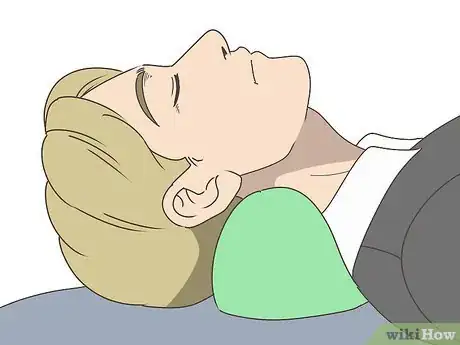

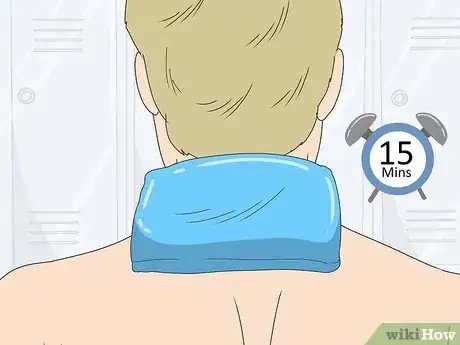
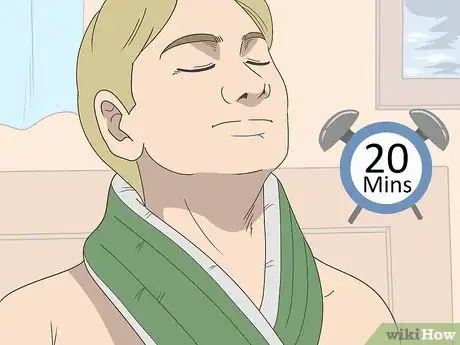
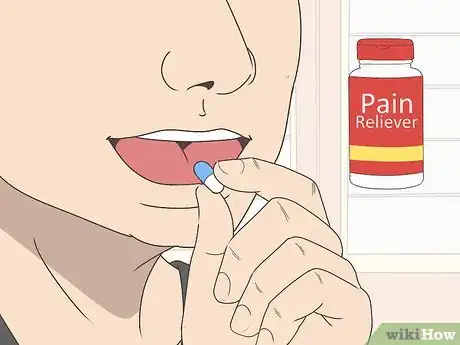
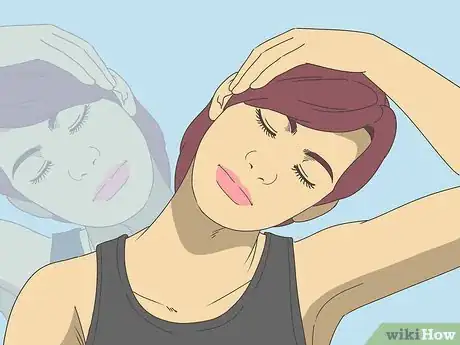

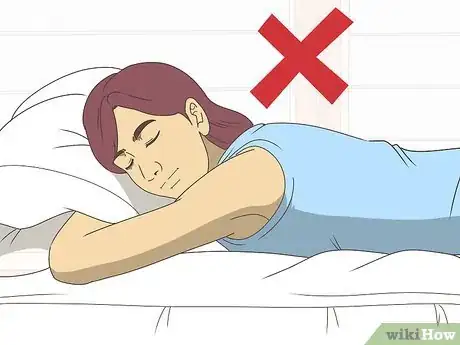
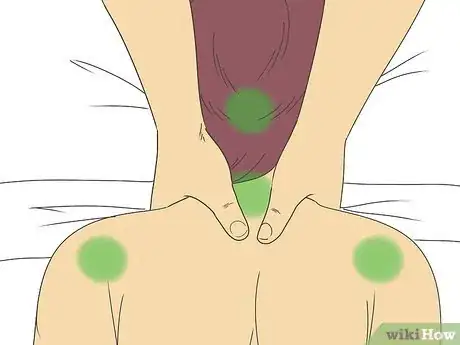
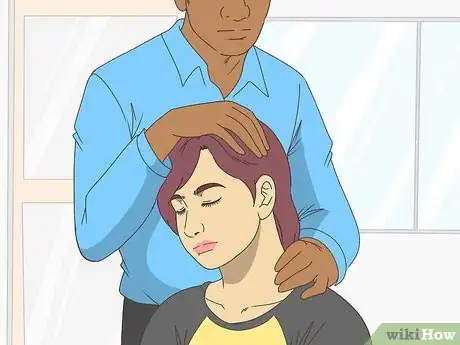
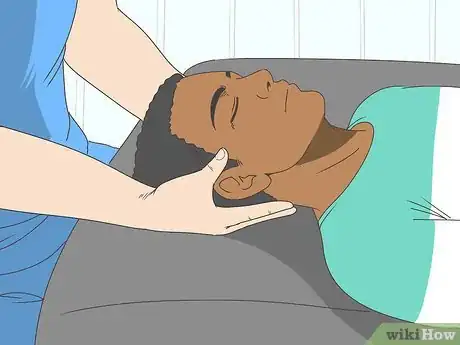
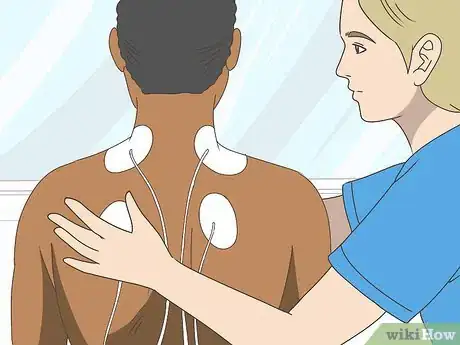
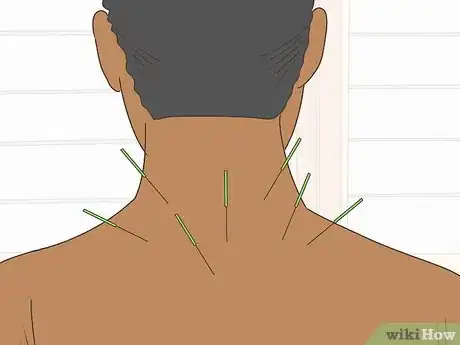
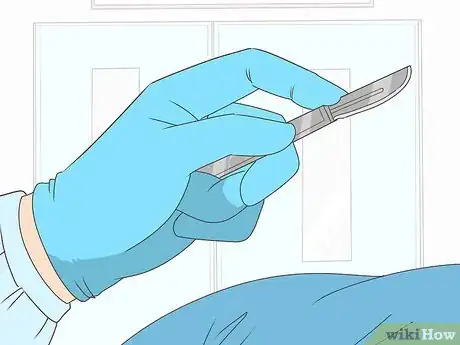
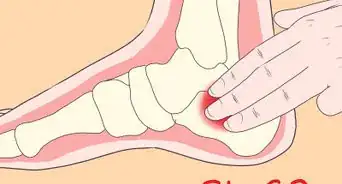



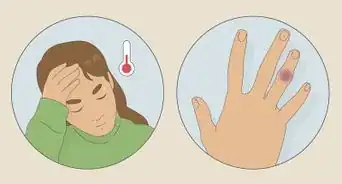

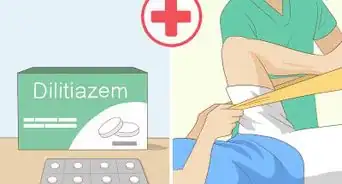
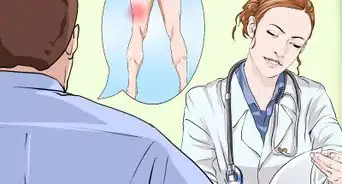
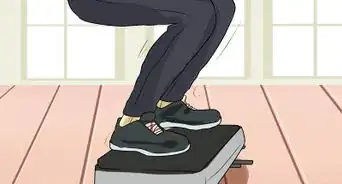
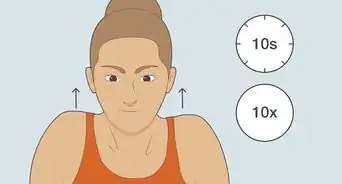

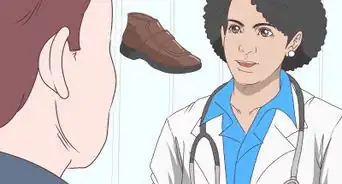

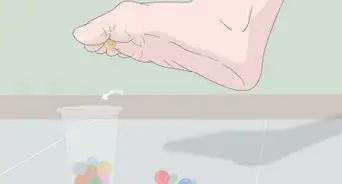








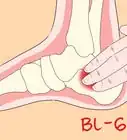






































Medical Disclaimer
The content of this article is not intended to be a substitute for professional medical advice, examination, diagnosis, or treatment. You should always contact your doctor or other qualified healthcare professional before starting, changing, or stopping any kind of health treatment.
Read More...